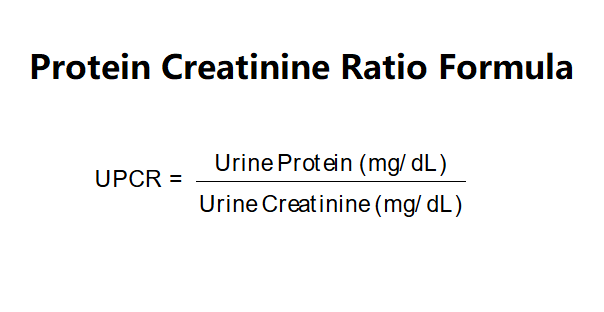 Home
Home
 Back
Back

Definition: This calculator determines the Urine Protein-to-Creatinine Ratio (UPCR) from a spot urine sample to estimate protein excretion.
Purpose: It helps screen for kidney disease by assessing proteinuria, a key indicator of renal health.
UPCR is calculated using:
Unit conversions:
Explanation: Protein and creatinine are converted to mg/dL, then UPCR is computed and used to estimate daily protein loss.
Details: UPCR correlates with 24-hour protein excretion, aiding in the diagnosis of conditions like nephrotic syndrome (>3.5 g/day).
Tips: Enter protein and creatinine values (mg/dL or g/L; >0). Results show UPCR (mg/mg) and estimated 24-hour protein (mg/day).
Q1: Why use UPCR instead of a 24-hour urine collection?
UPCR provides a convenient, reliable estimate of daily protein excretion from a single sample, avoiding the need for a full 24-hour collection.
Q2: What does a high UPCR indicate?
A high UPCR (>0.5 mg/mg) may suggest significant proteinuria, potentially due to kidney damage, such as in nephrotic syndrome or glomerulonephritis.
Q3: Can UPCR vary throughout the day?
Yes, UPCR can fluctuate due to hydration, diet, or activity. A single result should be interpreted with clinical context or repeated for accuracy.
Q4: Is the 24-hour protein estimate always accurate?
No, it’s an approximation assuming 1g/day creatinine excretion. Actual creatinine output varies by age, sex, and muscle mass, affecting precision.
Q5: When should I consult a doctor about my UPCR?
Consult a healthcare provider if UPCR exceeds 0.15 mg/mg consistently, especially with symptoms like swelling, fatigue, or abnormal urine.